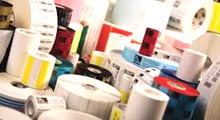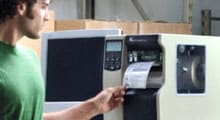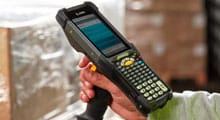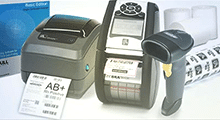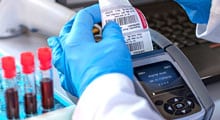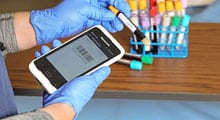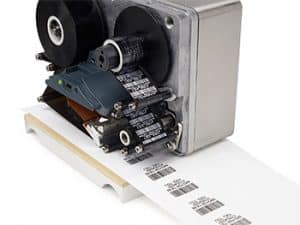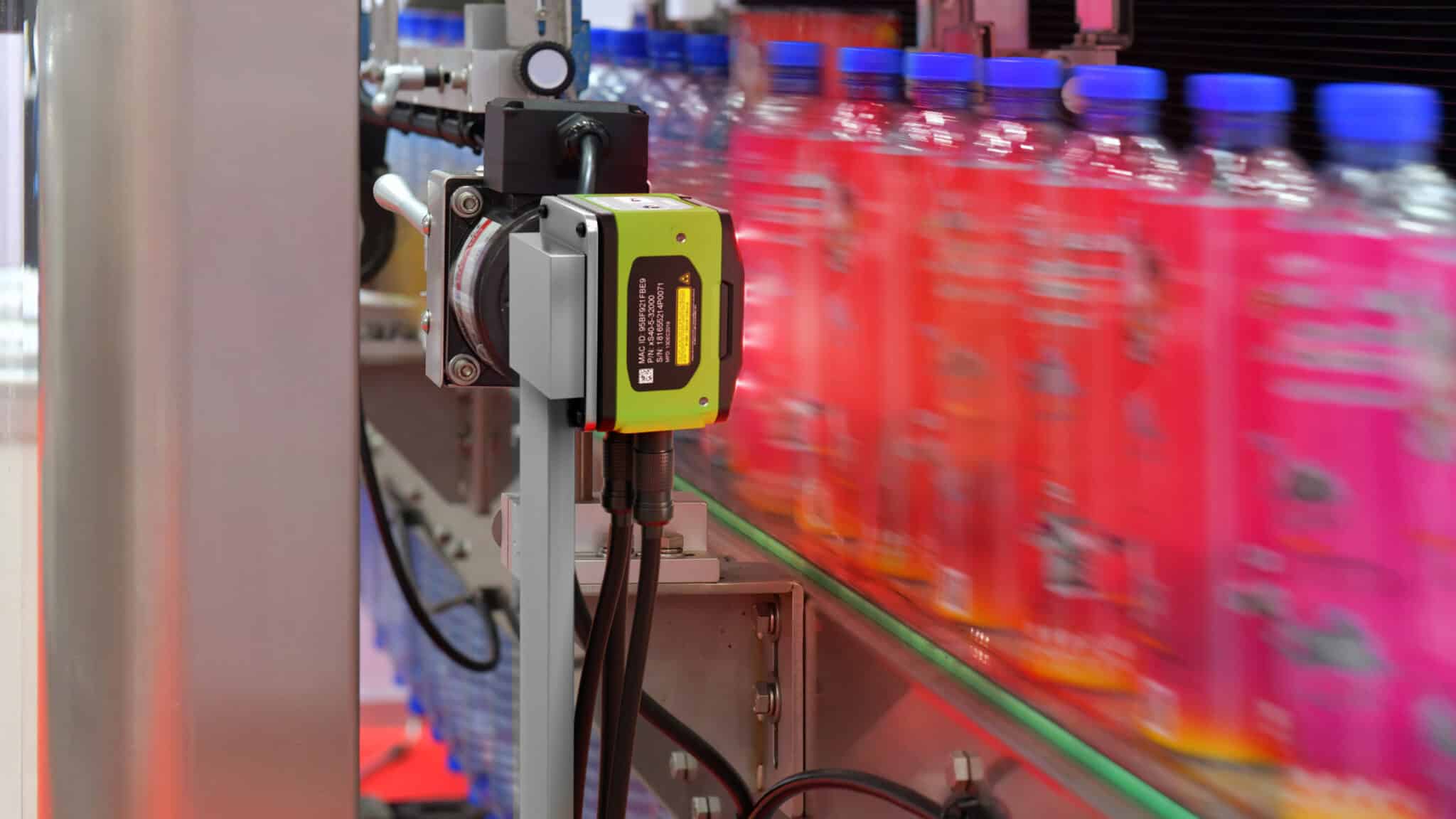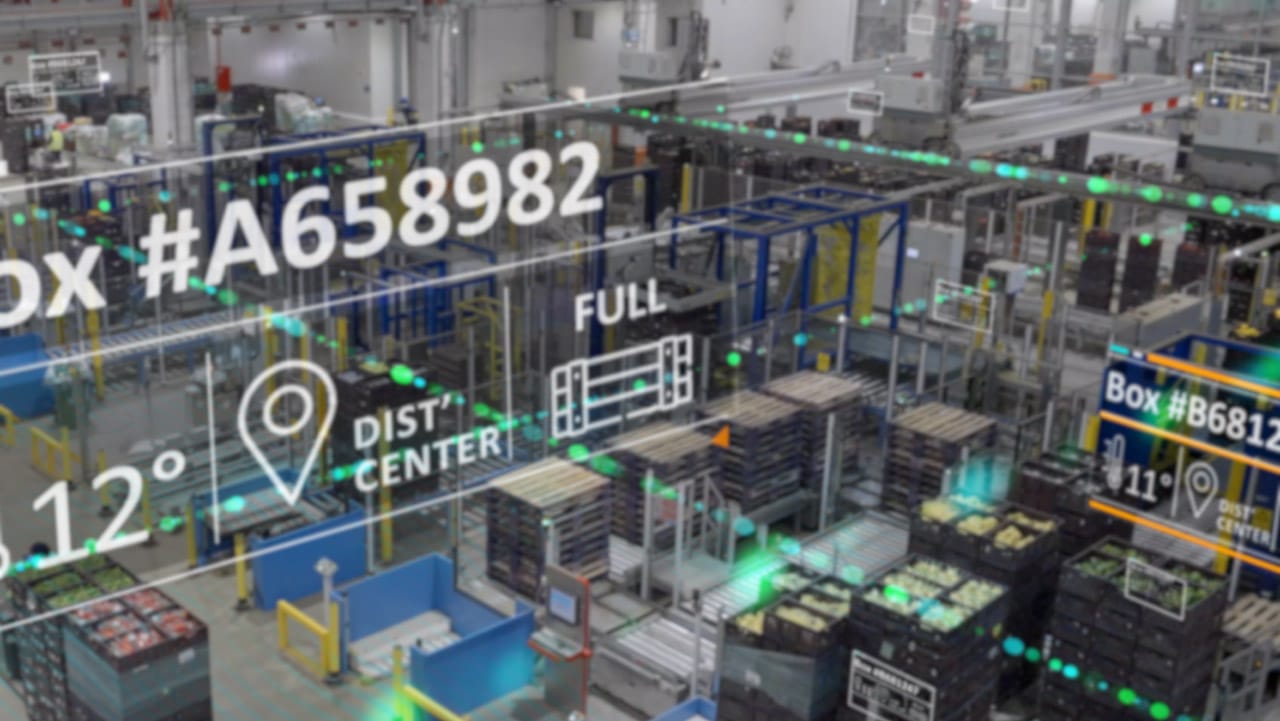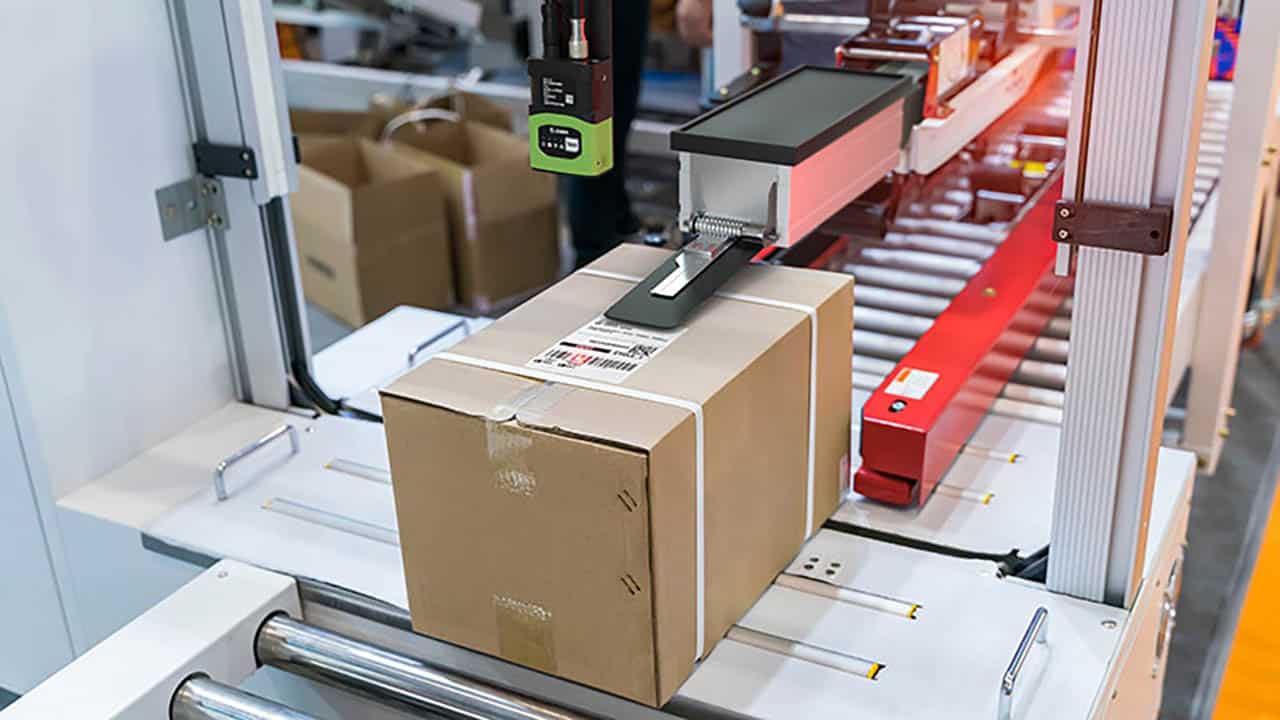Thermal Transfer Printing
Thermal Transfer Printing is a unique process that stands unparalleled by other variable imaging technologies for bar code labeling solutions. Unlike any of its counterparts, thermal transfer printing provides fail-safe durability, versatility and high-quality image output. This is why label printers typically use thermal technology.
In thermal transfer printers, the process occurs not on the substrate, but on the ribbon. As the ribbon and substrate come into contact with the printhead, heat from the printhead melts the ink in the ribbon and releases (transfers) the ink directly onto the substrate. Ink used in this process is generally composed of wax, resin, or a wax/resin compound, according to the requirements of the project. Wax ribbons are a less expensive and less durable label material, and are more suitable for short-term projects; resin ribbons are premium quality transfer agents, and are optimal for long-term, highly durable needs.
Advantages
Thermal transfer printing produces dense, high resolution images – color or black-and-white – and can be used on a wide variety of media. Since ribbons are used as the transfer agent, images produced by the process are highly resistant to chemicals and extremely durable. This helps with overall readability of the printed labels, making it a good option for several use cases, such as product identification. Thermal transfer printers work at high speeds and require little maintenance.
Disadvantages
The primary disadvantage of this technology is that each ribbon only has a one-time use. However, thermal transfer ribbons can be easily disposed and are comparatively environmentally safer to dispose of than the other printing technologies discussed below.
It is the industry’s most suitable solution for barcode label printing. Extremely versatile, thermal transfer technology produces crisp, resilient images on a virtually unlimited universe of substrates – a primary requirement of most barcoding projects, such as shipping labels. For absolute assurance of quality and reliability when it counts, there’s no other choice.
DIRECT THERMAL VS. THERMAL TRANSFER
While direct thermal and thermal transfer printing use virtually the same process, there is one crucial difference: direct thermal printers do not use ribbon. In this case, the thermal process occurs on the paper substrate itself – requiring a specially coated, heat-sensitive paper for optimal performance. The heat generated from the direct thermal printhead causes a chemical reaction with the top layer of the coated paper that essentially burns the transmitted image onto the paper.
Advantages
Images produced by direct thermal label printing are clear and defined, and this type of machine is cheap, simple to operate and easy to maintain. Direct thermal printing for barcode labeling is certainly an improvement over inkjet and laser technology, especially when it comes to speed and resolution.
Disadvantages
Direct thermal images are far less durable than thermal transfer printed images, and this technology is also constrained by substrate restrictions. The coated paper required is very sensitive to environmental conditions such as direct sunlight, extreme temperatures, and abrasion – limiting the range of applications to short-term projects. The images produced have no chemical resistance, and very short life spans. Primary uses are “Point-A-to-Point-B” applications, such as baggage checking in airports or parcel delivery. Barcoding projects requiring durable images and substrate flexibility are not well served by this technology.
LASER
Laser printing, much like photocopying, uses a light source to generate an exact duplicate of the image it receives. The light source – a laser beam – creates an electrostatic image that is then charged onto a photoreceptor; the electrostatic charges from the photoreceptor attract the toner to produce the printed image.
Advantages
The laser process produces beautiful, dense, high resolution images for text and graphics.
Disadvantages
When comparing thermal vs laser for barcoding purposes, the most serious constraint of this technology is its substrate limitation. Laser printers only work on certain types and sizes of labels – and certainly not directly on any non-paper surface, such as plastic or metal. It is also not the fastest option, and laser images are far less durable than thermal printed images. Toner cartridges and drum kits used in this process are extremely expensive, and hazardous if not disposed of properly. While the images produced by laser printers are much cleaner than those of inkjet, the lack of versatility, durability, and environmental safety – combined with high unit and maintenance fees – typical of laser printers certainly makes it a less efficient alternative for barcoding.
DOT MATRIX
One of the first printing technologies developed, dot matrix uses tiny round hammers to pound ink from a coated fabric ribbon onto a substrate – typically paper, which must be pin fed into the printer. Normally dot matrix printers use one or two column dot hammers – the more dot hammers on the print head, the higher the resolution.
Advantages
Dot matrix printers are readily accessible and very inexpensive – most typically used to type forms, checks, and other documents that require carbon copies. Since the pressure applied by the print head to transfer the ink ribbon to the paper helps create a carbon copy, this process is extremely useful for record keeping. Due to multi-pass, ribbons for these are relatively inexpensive.
Disadvantages
Primary drawbacks include low print quality, limited graphic capability, very slow print speeds, noisy operation, and a lack of resistance to chemicals. For barcode labels, especially, a defined image is crucial. The edge definition of dot matrix images is rarely clean or linear – greatly compromising the integrity of the barcode. This poor image quality, combined with the low speed and inability to resist chemical solvents, can severely inhibit performance – serious concerns that can greatly increase costs to manufacturers.
INKJET
There are basically two types of inkjet applications for barcode printing – direct print applications and label applications. Direct inkjet printing is very effective for barcodes and expiration dates directly on canned foods, liquid bottles, etc. For these uses, a special direct inkjet printer is necessary – these machines are very expensive, and are usually incorporated directly into the assembly line. Inkjet technology can also produce barcodes on labels using a standard office printer.
This printing technology is conceptually very similar to dot matrix – ink applied to a substrate in an up-and-down or side-by-side droplet form by pressure – however, the actual delivery method differs substantially. When comparing thermal vs. inkjet printers, inkjet units do not use direct pressure for the transfer process, nor do they rely on ink ribbons – instead, they use a combination of liquid ink, ultrasonic pressure and an electrostatic field. They create images by propelling ink into tiny, highly controlled jet streams and onto the substrate. The quality of the images is determined by the size of the ink droplets – small droplets produce cleaner lines, large droplets tend to blur.
Advantages
Inkjet printing is virtually the only solution for direct printing on a wide variety of substrates – from cartons and cans to plastics, glass, and paper. An assembly line setup can print at extremely high speeds and code large quantities in seconds. It is the most efficient method for alpha-numerical coding of consumer goods.
Disadvantages
While these printers do allow users to have more flexibility, their low image resolution, limited durability, and high unit price make them a less attractive option for barcoding purposes. Although assembly line inkjet printing services a large audience, it is a very niche application, and the printers tend to be extremely expensive. This process is also less solvent resistant, and specialty inks are required for high speed assembly line printing – a factor that entails costly maintenance and frequent routine attention. The ability to print directly on many substrates makes inkjet a very useful technology; however, for barcoding projects that require quality high resolution and good durability, thermal transfer printing is by far the better choice.
The Peak Technologies team can help you determine which printing technology is right for you; explore our different printing and labeling solutions, shop our barcode printers, or contact us today.







